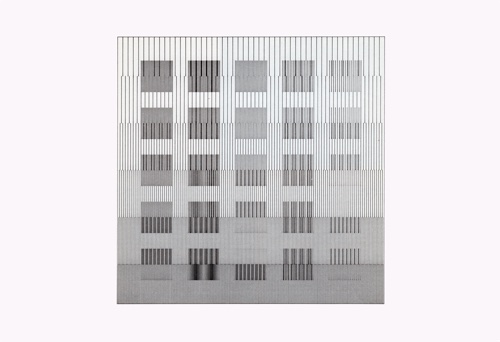Dominic Boreham
Dominic Boreham was born in Woodford, Essex, in 1944 and passed away in Dijon, France (2022), aged 77. He was educated at the William Morris Technical School, London. At the age of 12 he became aware that he had no choice but to be an artist. His father disagreed and instead of going on to art school, he was obliged to find employment. He worked first as a commercial artist and subsequently became an assistant at the Fitzwilliam Museum, Cambridge.
In 1972 at the age of 27, he did, however, commence the two-year Foundation Course at Cambridge School of Art. On completion in 1974, he chose Wimbledon School of Art, where his tutor was Colin Cina. In his second year, he won 1st Prizes in both Painting and Graphics as well as the Student Union Prize. On graduating he was awarded 1st class Honours with a distinction.
He went on to the Slade in 1977 where his tutor was Malcolm Hughes. He spent his entire two years in the Slade Electronic Experimental Department programming the computer to drive a flat-bed plotter to make several different series of drawings. Conceptually, he benefited from many sessions with Dr A.R. Jonckheere of the Psychology Department, who also introduced him to Prof. Richard Gregory at Bristol University.
On completion of his post-graduate studies he was invited by Bruce Archer to conduct PhD research in the Design Research Department at the Royal College of Art. Here he found the computing facilities inadequate but a timely invitation in 1980 from Ernest Edmonds to join his Human-Computer Interface Research Unit gave him the research environment that he needed. He received his Doctorate in pictorial structure and artificial vision from the Royal College of Art in 1983.
In 1976, Tony Longson initiated him into computer programming and from 1977 until 1983 he concentrated entirely on making drawings by programming a computer to drive a plotter. Edward Ihnatowicz introduced him to John Lansdown and the Computer Arts Society where he became Editor of PAGE from 1979 – 82, transforming it from a broadsheet to a forty-page journal, and consequently became a significant and influential pioneer of Computer Art in the international Avant-Garde.
His computer artwork is collected internationally and is in several public collections including the Victoria & Albert Museum, London; Musée d’Art et d’Histoire, Cholet; National & University Library, Zagreb; Sainsbury Centre for Visual Arts - Collection of Abstract & Constructivist Art, Norwich.
Artworks
Yantra, Multiple light projection (1974)

Indeterminacy Grid IG74 (1979)

More Information
- Obituary in the Guardian 20th February 2023
- Dominic Boreham @ GV Art
- Dominic Boreham @ Wikipedia
- Tickle #87 featuring an article about Dominic Boreham
